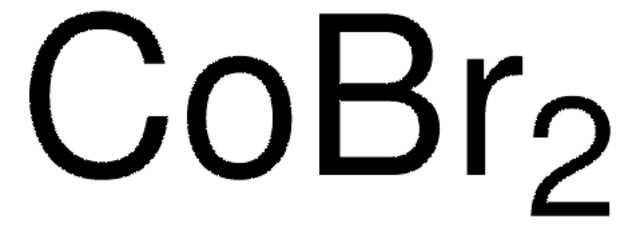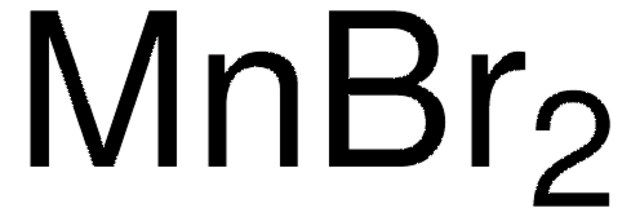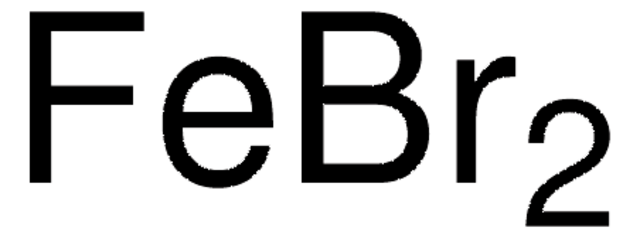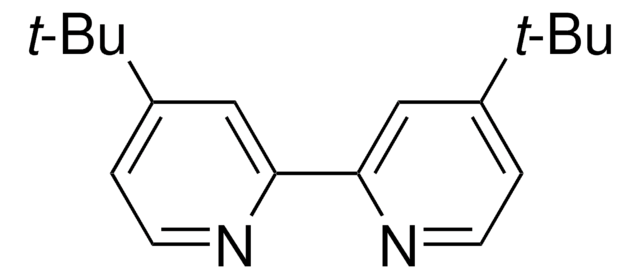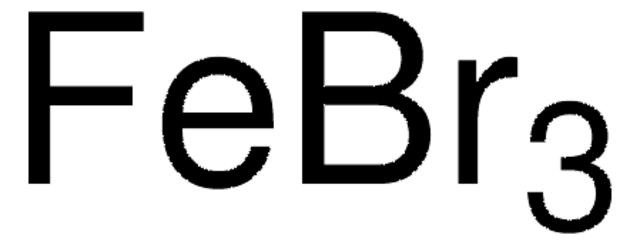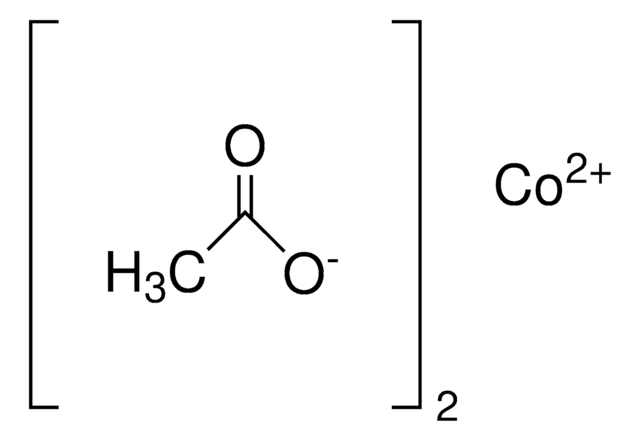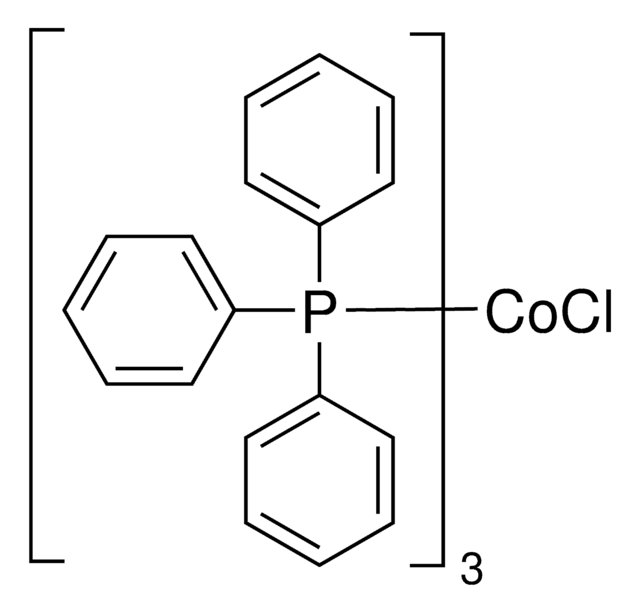334022
Cobalt(II) bromide
99%
Sinónimos:
Cobaltous bromide, Dibromocobalt
Seleccione un Tamaño
Seleccione un Tamaño
About This Item
Productos recomendados
Nivel de calidad
Ensayo
99%
Formulario
powder
idoneidad de la reacción
core: cobalt
mp
678 °C (lit.)
solubilidad
acetone: soluble(lit.)
ethanol: soluble(lit.)
methanol: soluble(lit.)
densidad
4.909 g/mL at 25 °C (lit.)
aplicaciones
battery precursors
catalysts
material synthesis precursor
cadena SMILES
Br[Co]Br
InChI
1S/2BrH.Co/h2*1H;/q;;+2/p-2
¿Está buscando productos similares? Visita Guía de comparación de productos
Categorías relacionadas
Aplicación
- Synthesis, crystal structure and thermal properties of dibromidobis (2-methylpyridine N-oxide-κO) cobalt (II): This study provides insights into the crystal structure and thermal properties of a cobalt(II) bromide complex, highlighting its potential applications in materials science (Näther & Jess, 2024).
- Coordination complexes of isoquinoline with cobalt and nickel halides: The study describes the formation of coordination complexes using cobalt(II) bromide with isoquinoline, which could be used for further exploration in coordination chemistry (Bellerive et al., 2024).
Palabra de señalización
Danger
Frases de peligro
Consejos de prudencia
Clasificaciones de peligro
Acute Tox. 4 Oral - Aquatic Acute 1 - Aquatic Chronic 1 - Carc. 1B - Muta. 2 - Resp. Sens. 1 - Skin Sens. 1
Código de clase de almacenamiento
6.1C - Combustible acute toxic Cat.3 / toxic compounds or compounds which causing chronic effects
Clase de riesgo para el agua (WGK)
WGK 3
Punto de inflamabilidad (°F)
Not applicable
Punto de inflamabilidad (°C)
Not applicable
Elija entre una de las versiones más recientes:
¿Ya tiene este producto?
Encuentre la documentación para los productos que ha comprado recientemente en la Biblioteca de documentos.
Los clientes también vieron
Nuestro equipo de científicos tiene experiencia en todas las áreas de investigación: Ciencias de la vida, Ciencia de los materiales, Síntesis química, Cromatografía, Analítica y muchas otras.
Póngase en contacto con el Servicio técnico
